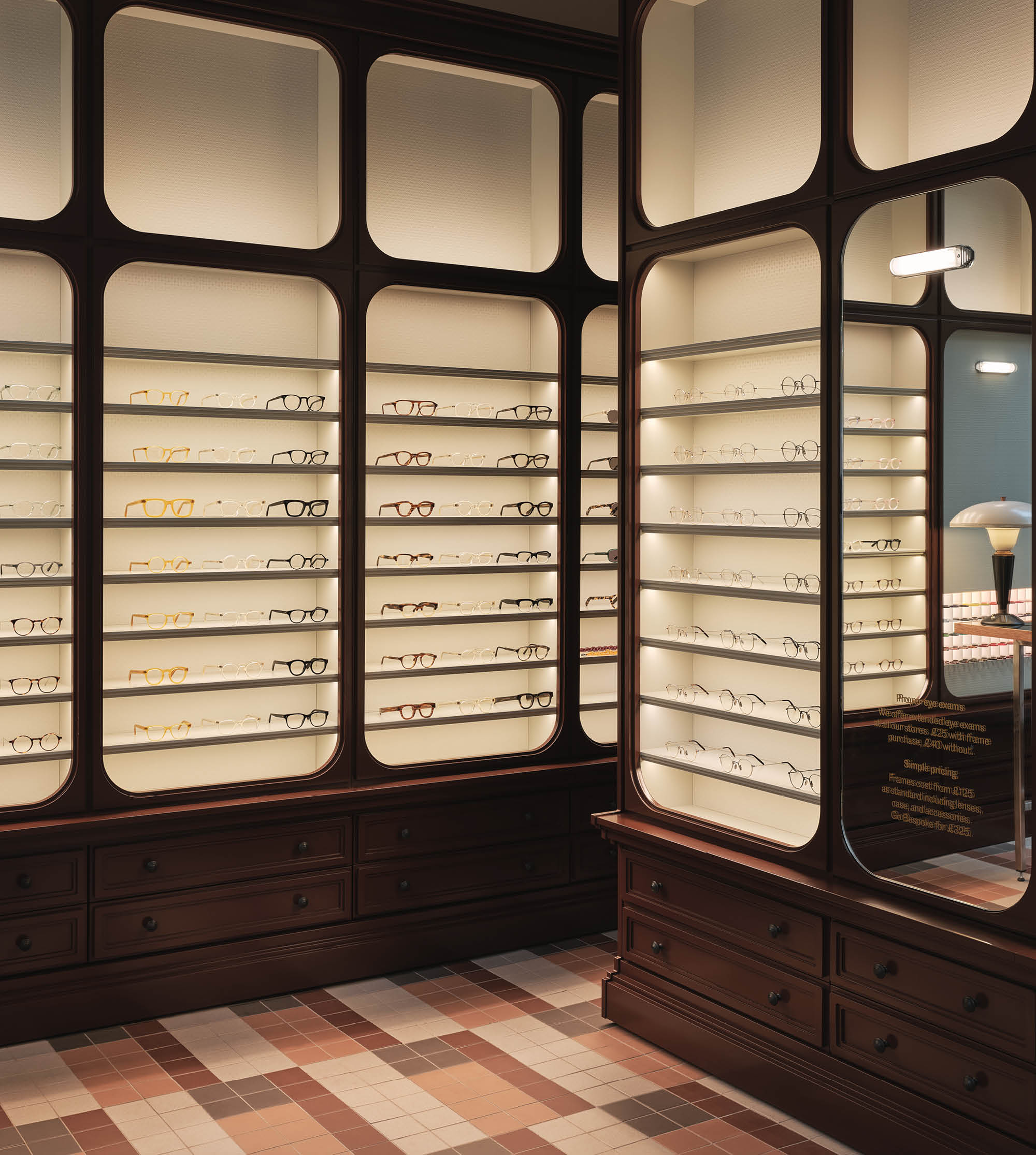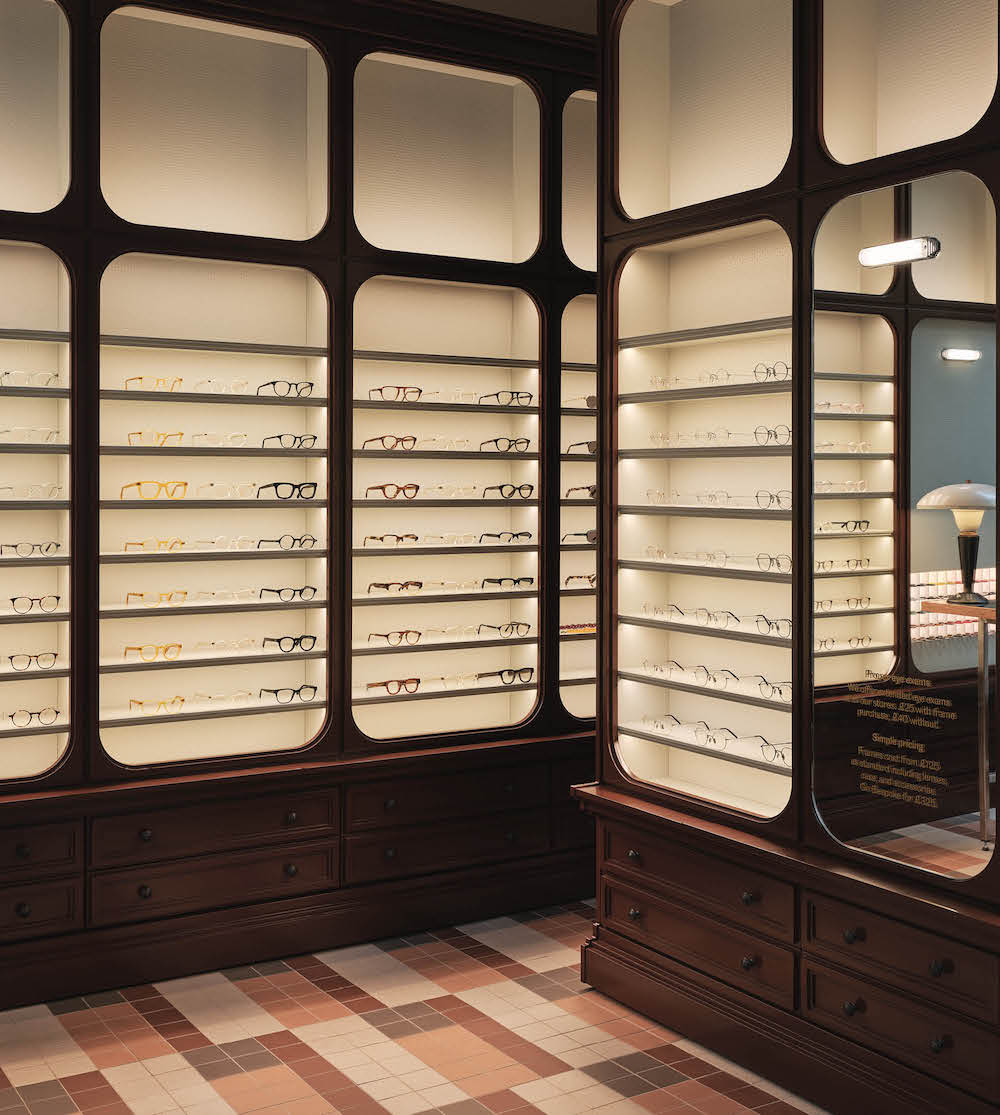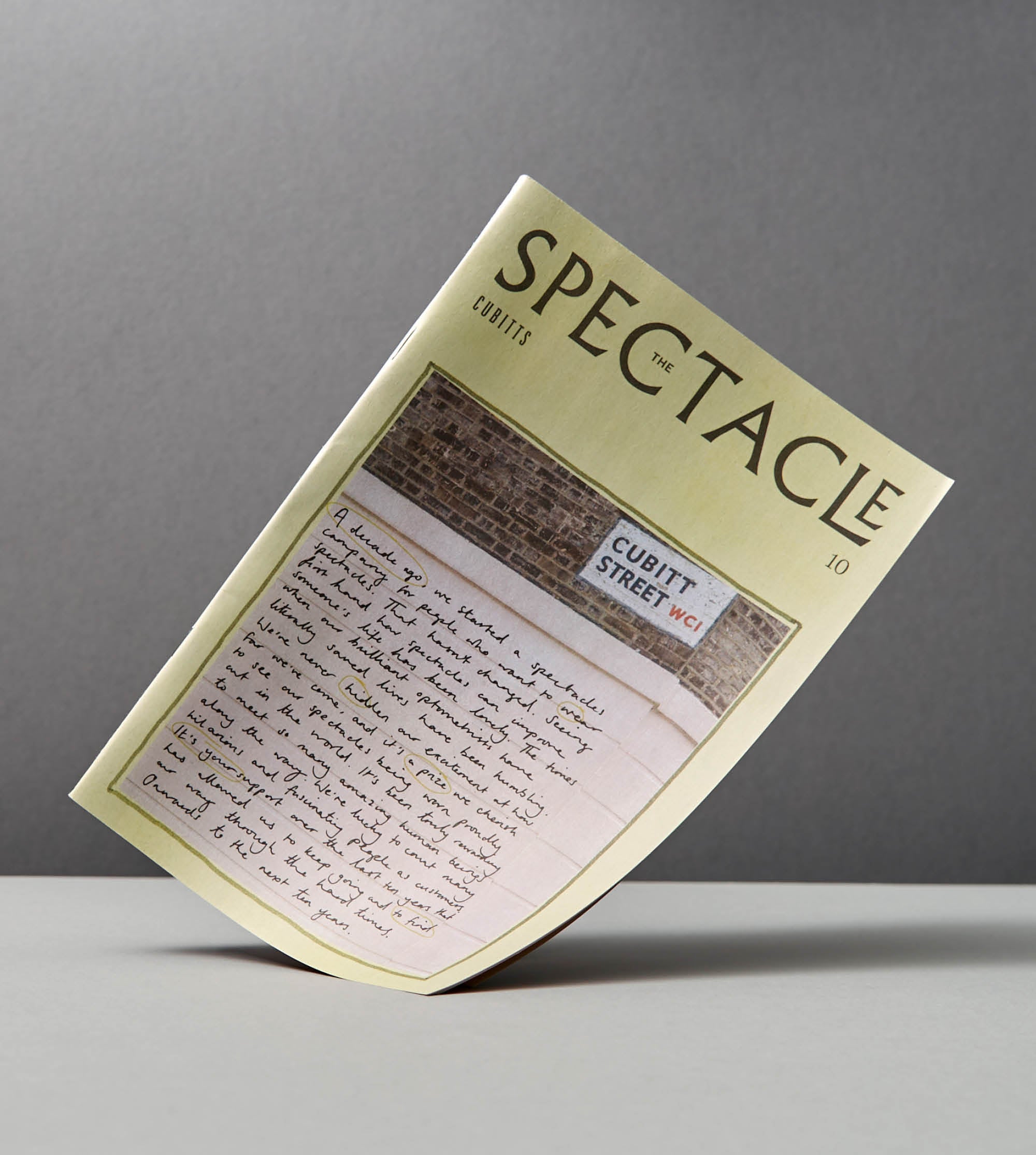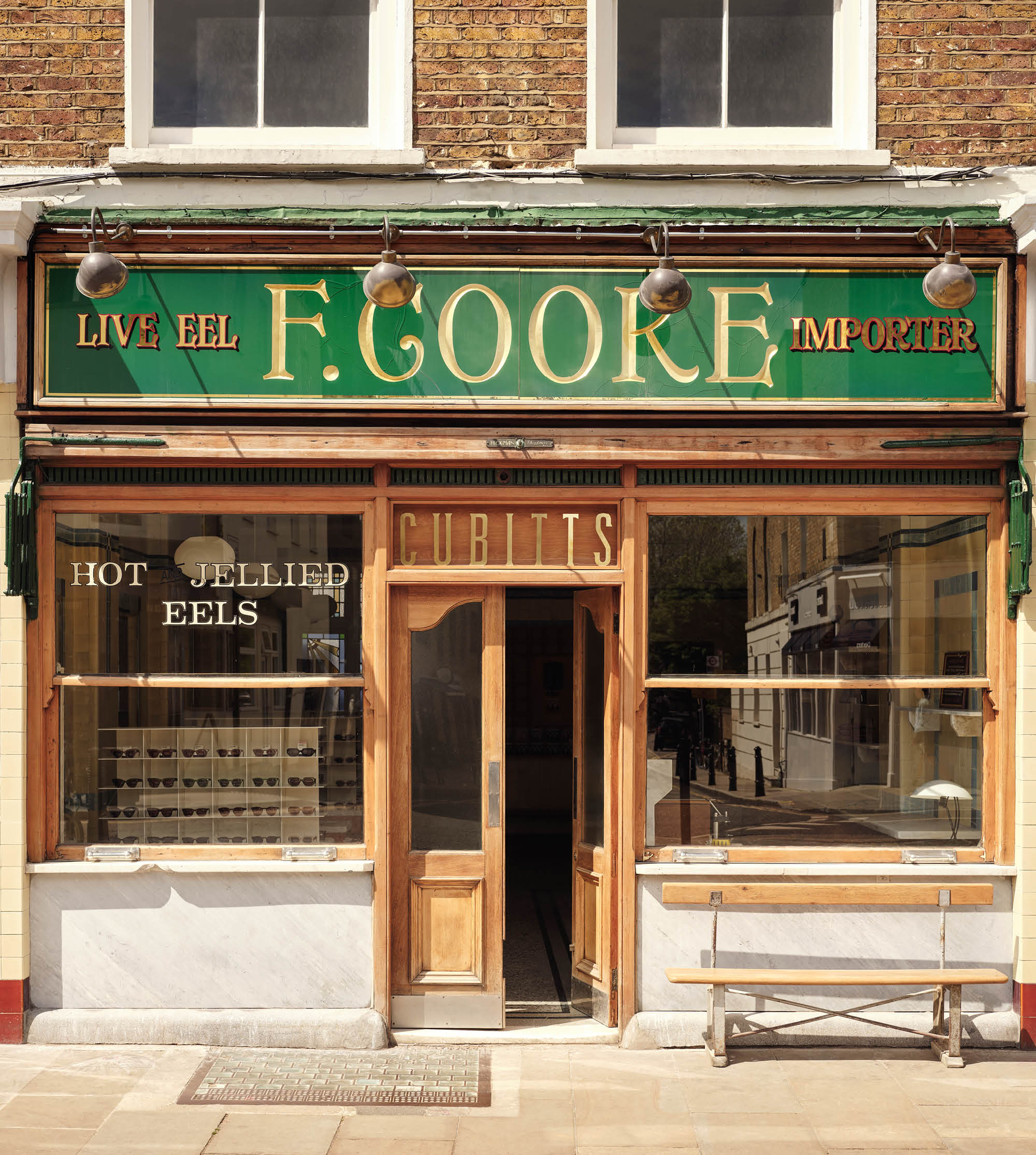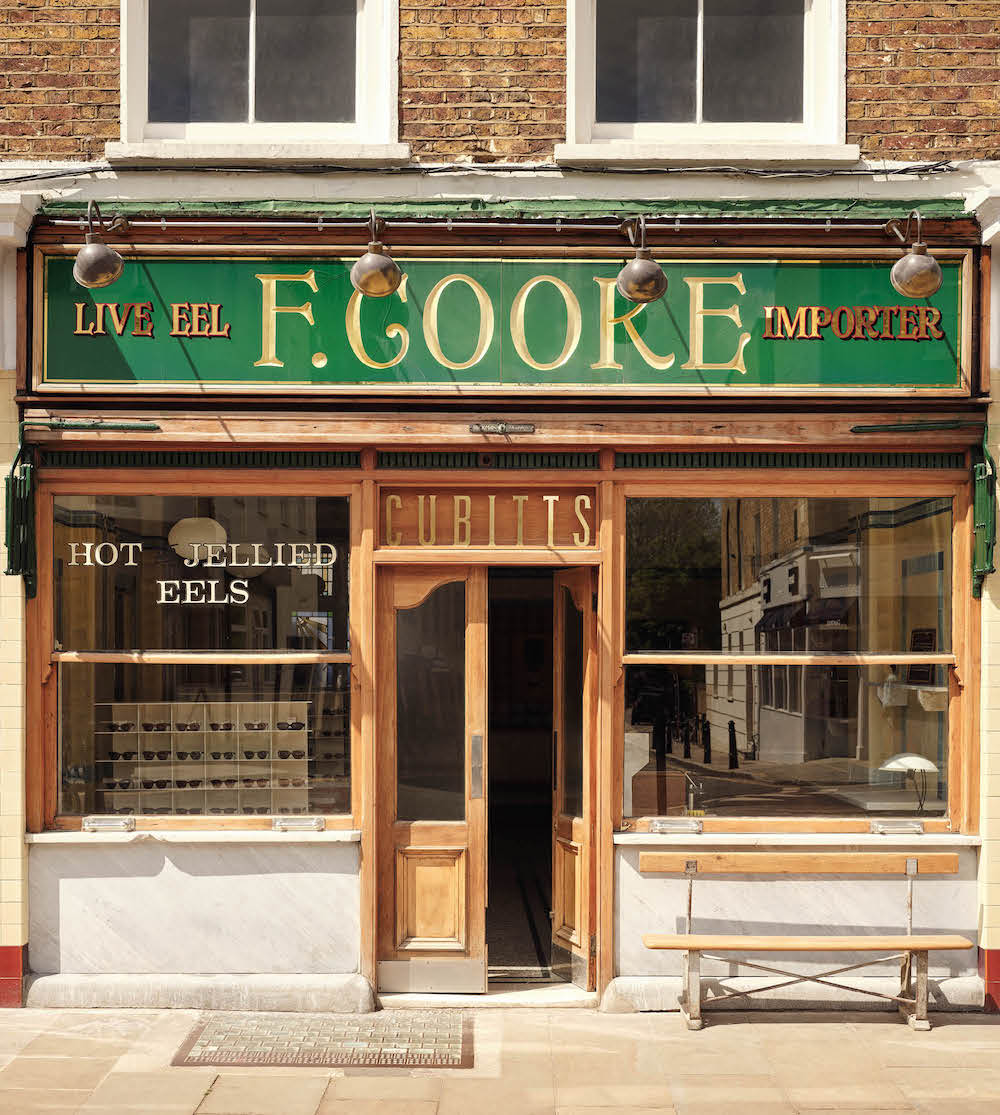
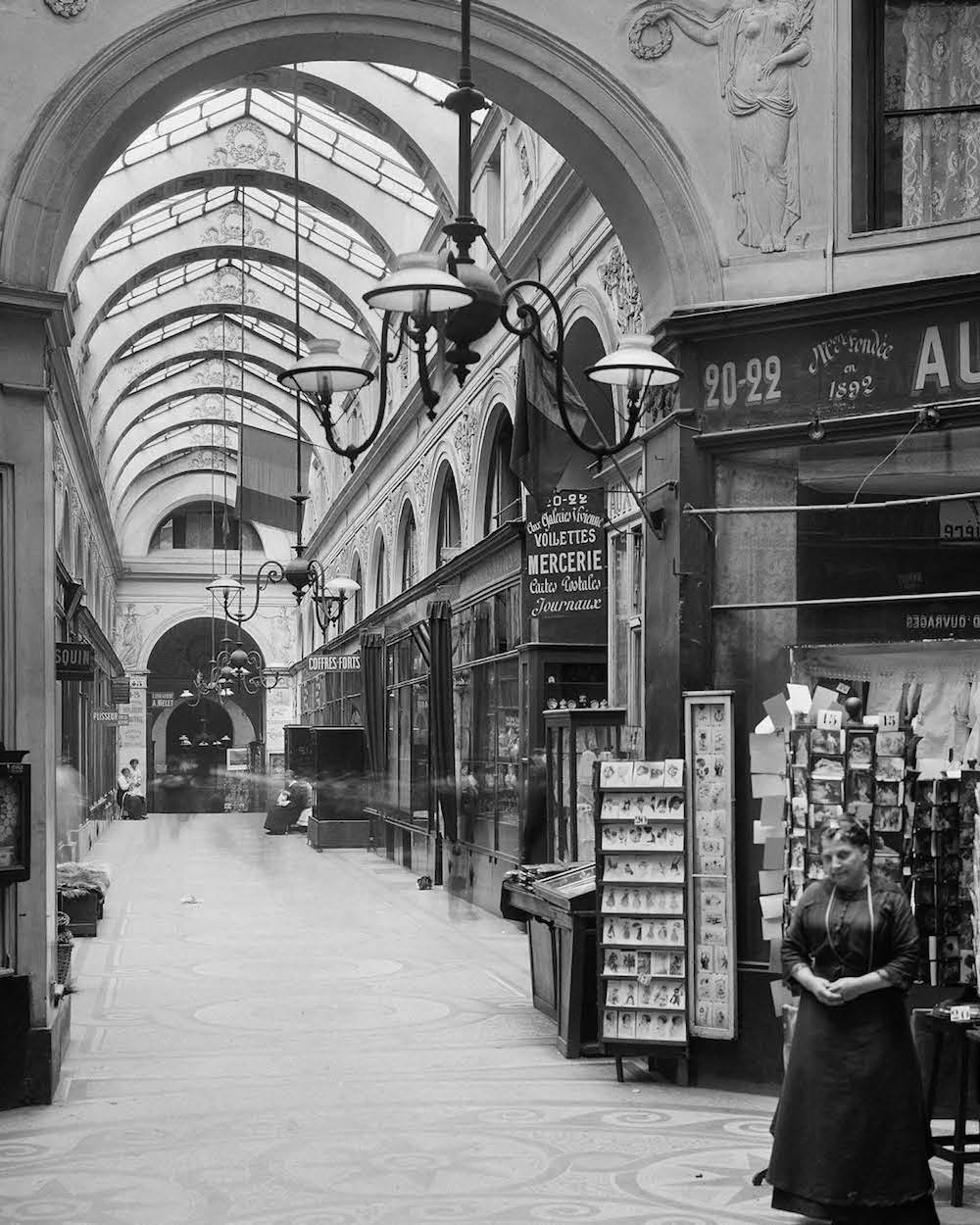
From Paris to Leeds
Flâneur in residence Tom Branfoot explores the environs of Cubitts Leeds.
The Paris arcades came into being partway through the 19th century, following a boom in the textile trade and technological innovations in construction. An aspect of arcades that Walter Benjamin, Honoré de Balzac, and Louis Aragon all comment on are window displays — paving the way for department stores of the twentieth century. Balzac compares the displays to a poem in their juxtaposition of images and objects. A metallurgic advancement of modernity, iron was avoided in home-building but used for ‘arcades, exhibition halls, train stations—buildings that serve transitory purposes’. Iron allowed the narrow streets of Paris to be covered in a structure offering protection against inclement weather while adding a new dimension to experiencing the city.
Under Napoleon III’s reign, Georges-Eugène Haussmann’s renovation of Paris involved demolishing old neighbourhoods, narrow streets, and arcades to install wide avenues and new squares. One motivation for this wholesale renovation was to prohibit the barricading of streets during uprisings and revolts. Conversely, between 1898 and 1904, slums and slaughterhouses in Leeds were demolished to accommodate the construction of the County and Cross arcades and the Empire Palace Theatre. All buildings in the Victoria Quarter development were designed by Frank Matcham, architect of the London Palladium. Matcham’s palatial designs featured ornamental terracotta, marble columns, mahogany shopfronts, and balustraded balconies, ushering in the Neo-Baroque style of Edwardian Britain.
Under Napoleon III’s reign, Georges-Eugène Haussmann’s renovation of Paris involved demolishing old neighbourhoods, narrow streets, and arcades to install wide avenues and new squares. One motivation for this wholesale renovation was to prohibit the barricading of streets during uprisings and revolts. Conversely, between 1898 and 1904, slums and slaughterhouses in Leeds were demolished to accommodate the construction of the County and Cross arcades and the Empire Palace Theatre. All buildings in the Victoria Quarter development were designed by Frank Matcham, architect of the London Palladium. Matcham’s palatial designs featured ornamental terracotta, marble columns, mahogany shopfronts, and balustraded balconies, ushering in the Neo-Baroque style of Edwardian Britain.

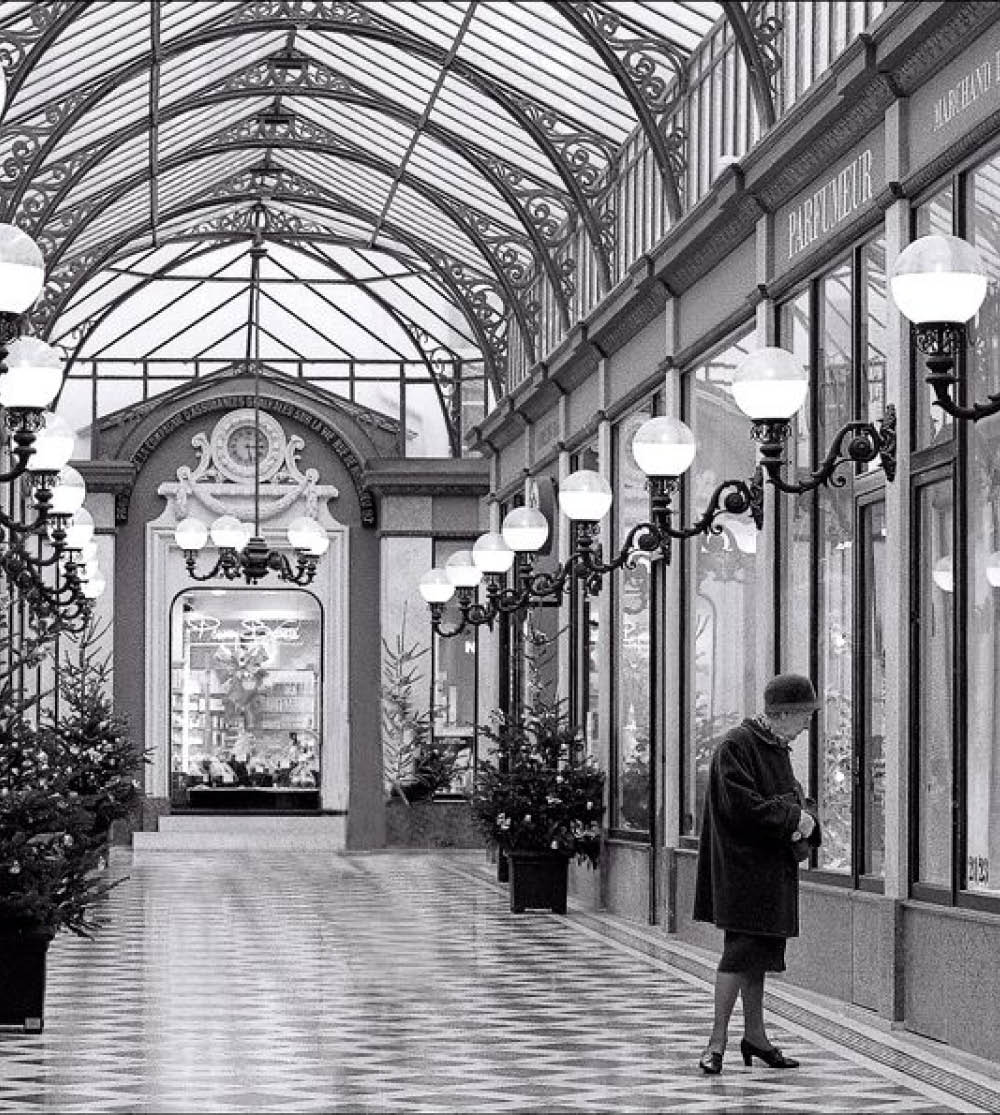
Replacing the unsanitary slums in Leeds with ornate arcades contrasts with the deletion of the Paris arcades by Haussmann, the so-called ‘demolition artist’. Taking Benjamin’s assertion that the Paris arcades — constructed with iron and glass to adjoin and cover narrow streets — represent the ephemerality of modernity, in Leeds it is the disappearance of insalubrious pubs and slum housing for textile workers which represents the transience of modern city-building. Matcham’s grandiose style opposes ephemerality, consolidating arcades as an emblem of modernity in our ‘nation of shopkeepers’. To my mind, Matcham’s architectural philosophy operates in tandem to the idea of progress as cumulative and civilising, his construction of arcades contradicts their structural essence, turning commerce into theatre.
The term flâneur gained traction in the 19th century characterising — more often than not — a man of means who wandered the city, observing the street-life and conditions of modernity. Walter Benjamin’s study of Charles Baudelaire in the Arcade Project comments on how, through the Paris arcades, ‘the intelligentsia becomes acquainted with the marketplace’. In a city that alienates the human psyche, the ‘crowd is the veil through which the familiar city is transformed for the flâneur into phantasmagoria’.
The term flâneur gained traction in the 19th century characterising — more often than not — a man of means who wandered the city, observing the street-life and conditions of modernity. Walter Benjamin’s study of Charles Baudelaire in the Arcade Project comments on how, through the Paris arcades, ‘the intelligentsia becomes acquainted with the marketplace’. In a city that alienates the human psyche, the ‘crowd is the veil through which the familiar city is transformed for the flâneur into phantasmagoria’.
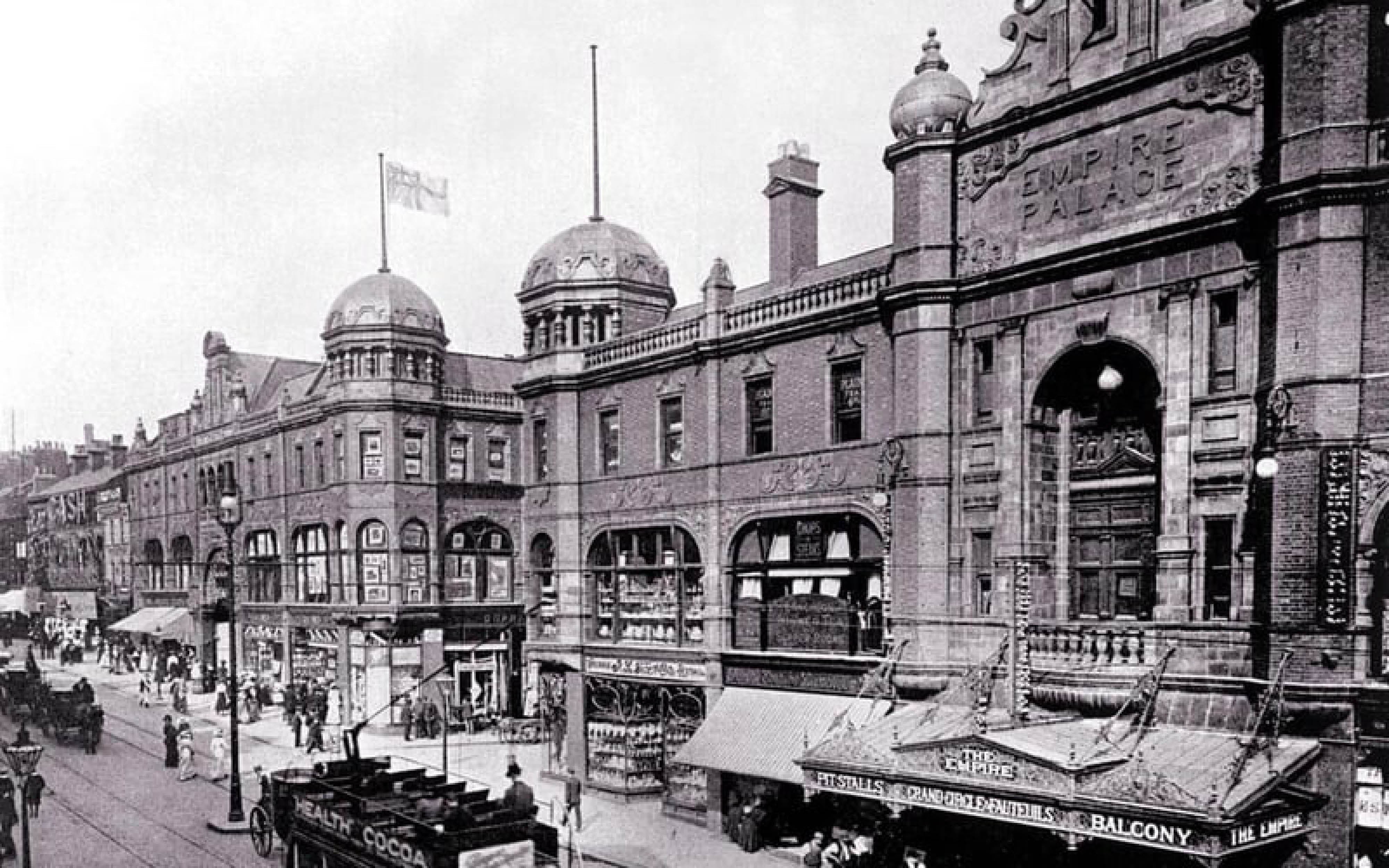
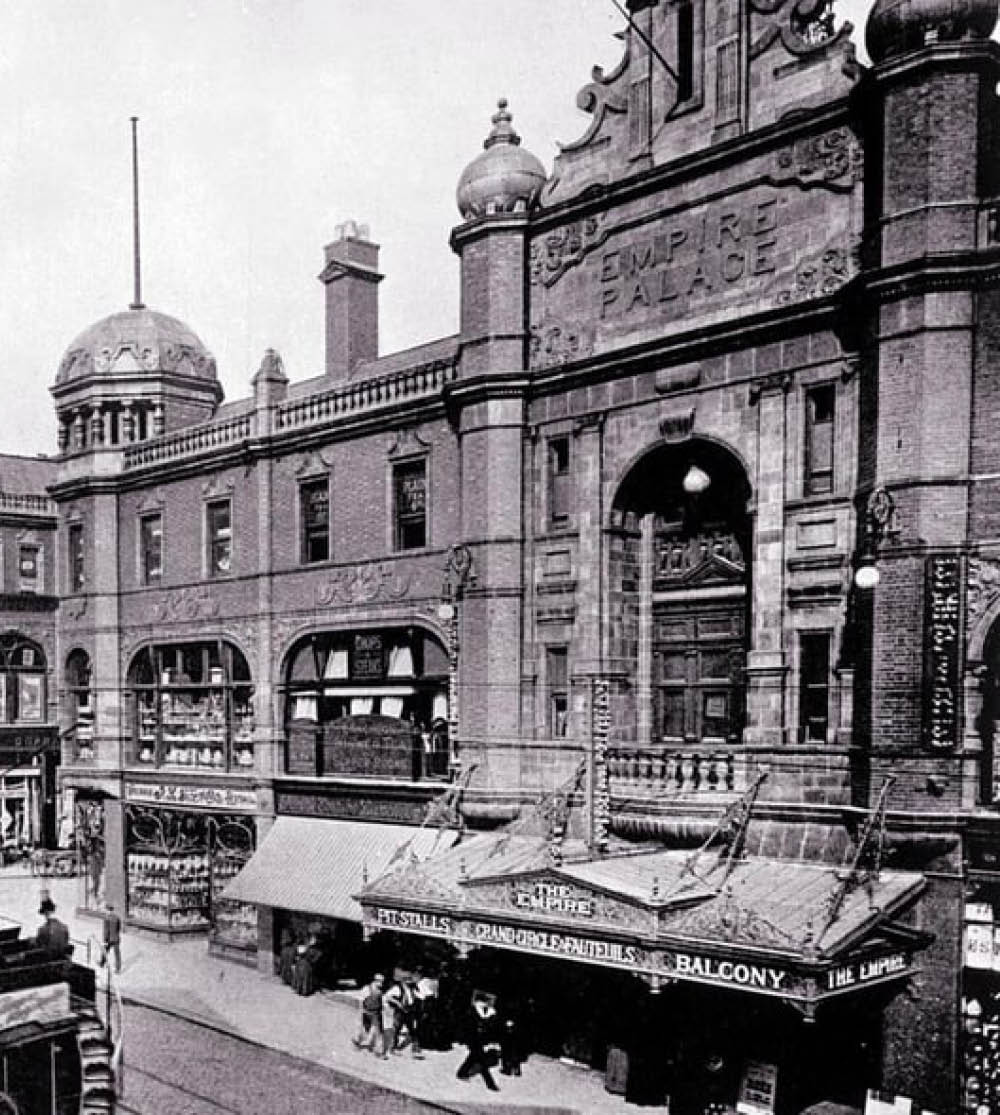
In the 19th century, Leeds was dominated by industry; between 1790 and 1840, there was an influx of residents moving for factory work. Cramped terraced housing was made to accommodate this working population, often with shared toilets sans proper drainage. As with many cities in the Victorian period, overcrowding led to disease and unsanitary conditions. Poverty increased massively, leading to workhouses which housed and fed the impoverished in exchange for their labour. Many wealthy inhabitants of Leeds swapped the fuliginous city for the leafy suburbs. The rapid transformation of the Victoria Quarter from squalid rookeries into a theatrical arena of commerce reflects the prosperity of industrial modernisation and the rush of artistic inspiration during the heights of Empire. The impact of colonial exploitation remains extant in buildings such as Thornton’s India Rubber Company on Briggate, and Quebec street — named to honour General Wolfe, who captured Quebec from French forces and indigenous communities.
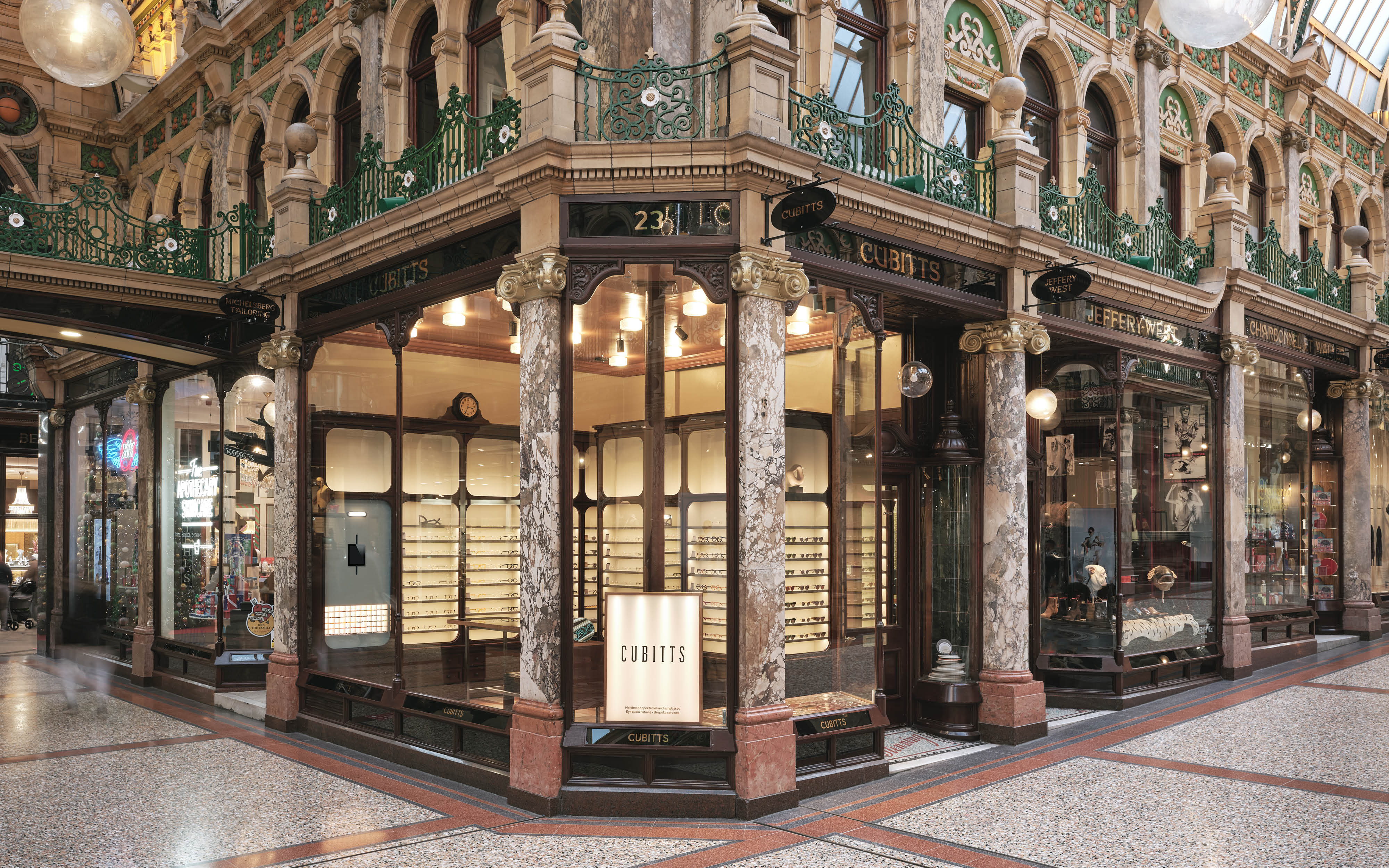
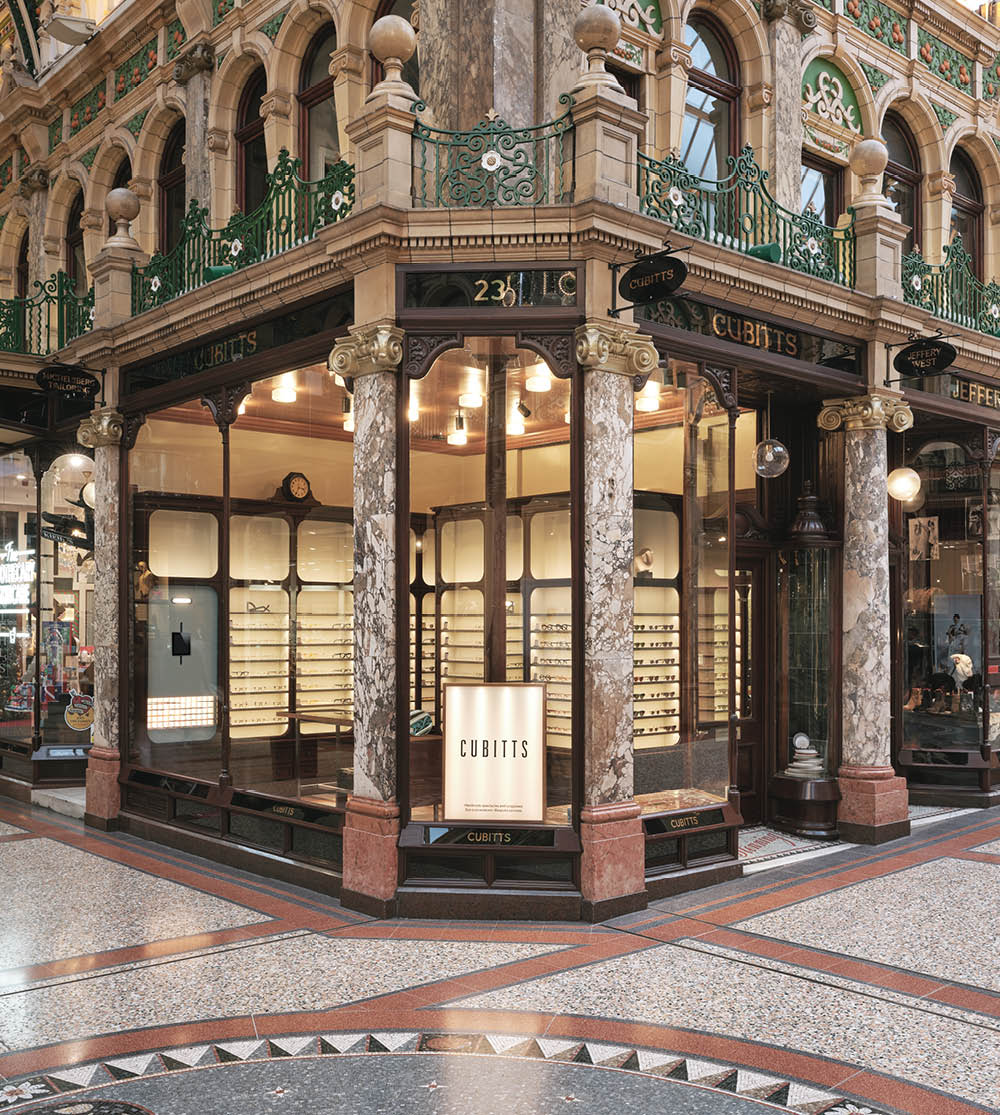
In 1962, Matcham’s Empire Palace Theatre was demolished, making way for upmarket retail shops and is now home to Harvey Nichols, bolstering Benjamin’s claim that 19th century arcades were proto-department stores. All that remains is a terracotta plaque inscribed with Empire Palace, which stood above the stage door. Cubitts, in Leeds’ County Arcade, stands where meat markets and slums used to be. The modernist tiling, apropos Le Corbusier, converses with the pink marble and terrazzo installed by Matcham. Baudelaire would have been dismayed by the homogeneity of contemporary department stores playing the music of mass culture from omnipresent speakers. Yet one hopes the storefront and considered design of Cubitts would have intrigued the aesthete flâneur, spectacles in the window dancing like relics of the past.
